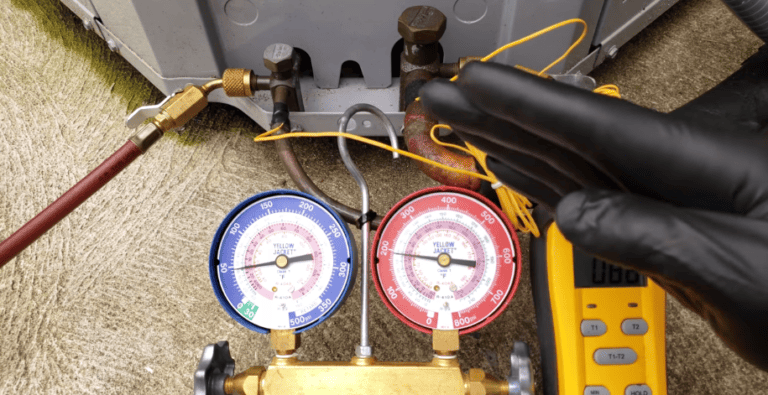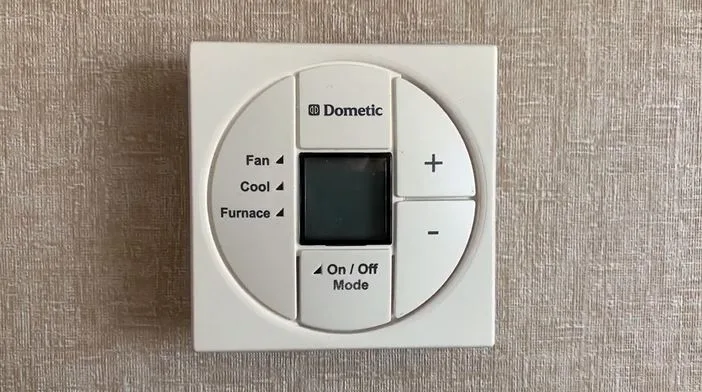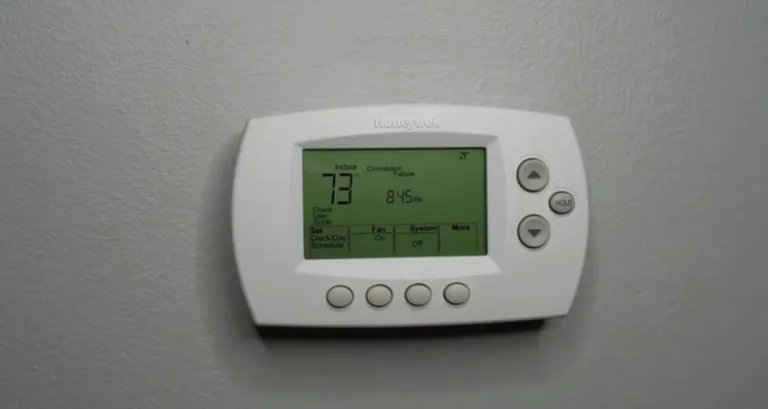Furnace Ignitor Lights But No Flame [Fixed]
If your furnace ignitor lights but no flame can be seen, this could be caused by several factors. These include a faulty or shut-off gas valve, dirty burners, a malfunctioning ignition assembly, or an open high-limit switch.
To fix this problem, you will typically have to check if the gas valve is functioning properly, if the burners are dirty, or if you have a malfunctioning ignition assembly or a high-limit switch.

The chart below summarizes the most common causes for burners that won’t light despite the ignitor lighting.
Read also: Furnace Pilot Light Is On But No Heat Coming [Fixed]
Possible Reasons A Furnace ignitor lights but no flame from main burner
| Cause | Fix |
| Faulty gas valve | Replacement |
| Bad circuit control board | Replacement |
| Faulty/open high limit switch | Replace high limit switch |
| Dirty burner carry over ports | Try cleaning the burners carry over ports |
Faulty Gas valve
If the furnace igniter lights but no flame can be seen, ensure that the gas valve is working and that gas is flowing through it.
Step 1: Start by verifying that you have a good gas supply. Check if other gas appliances are working to be sure the gas meter is on.
If other appliances are not working, check to be sure that the meter is turned on.
Step 2: You should then verify that the manual shutoff valve at the furnace is on and that the electric gas valve is turned to the on position.
If everything looks good, and the igniter lights but no flame is starting, try the following:
Turn off the manual shutoff valve and open the pipe union or flex connector. Then, turn the manual shutoff valve on briefly just to be sure you have a good gas supply.
Other ways to verify there is gas supply to the burners include:
Paying attention to the sound near the burners. If there is gas coming through, you should hear a hissing sound from the gas pressure.
You can also smell the odor of the gas.
Bad Circuit control Board
If everything you have checked above is okay, you may want to verify if the gas valve is being energized by the furnace control board.
Connect an AC voltmeter across the wires to the gas valve. Then, set the thermostat to heat and raise the temperature above room temperature.
After the igniter heats up, the circuit board should activate 24 VAC to the gas valve, turning on the gas.
However, if no voltage is applied, you probably have a faulty circuit board that needs replacement.
On the other hand, if the voltage is applied but you have no gas coming out, you may have a defective gas valve that needs replacement.
Read also: Pilot Light Lit But Burners Won’t Ignite [Fixed]
High Limit Switch
If the high limit switch is malfunctioning, it could prevent the burners from igniting despite the igniter lighting up.

A high limit switch is one of the safety switches on a furnace that shuts down the furnace when there is restricted airflow within it. Restricted airflow leads to overheating, triggering the high limit switch to trip.
The following are some factors that can cause the high limit switch to trip and which you should investigate to resolve the problem:
Dirty Air Filter
Check if your filters are dirty. Clogged filters restrict the airflow into the furnace, resulting in insufficient air in the heat exchanger, leading to overheating. Replace dirty air filters to resolve this issue.
Blockage in Air Duct
Inspect the ductwork for any blockages, twisted ducts, or disjointed sections. These issues can obstruct the flow of hot air and cause overheating. Unblock the air ducts to fix the problem.
Blocked/Closed Air Vents
Closed vents can also cause overheating, triggering the high limit switch to trip. Ensure that all vents are open and free from any objects or materials blocking them.
Bad Blower Motor
The blower motor is responsible for circulating air within the furnace system. It draws in air, passes it through the heat exchanger to absorb heat, and then distributes it through the ductwork. When the blower motor is defective, it fails to circulate air effectively.
To check the blower motor, try manually spinning the blower wheel when the furnace is off to see if it’s seized (an unusual problem).
If the blower motor is seized, it will require replacement.
However, if the blower motor spins freely with a manual spin, the issue could be with the motor capacitor, in which case it will also need replacement to resolve the problem.
Dirty carry over ports
Another reason you may not have flames from the burners is that the burner ‘carry-over ports’ are dirty and have some debris on them that prevents the flames from lighting in the next burner over.
If you are lucky, you can bang on the burners a bit and have a fair chance of dislodging the gunk so that the burners will light properly again. You can even use an object like a pair of Channel Lock pliers to do that.
You just don’t want to dislodge or misalign the burners, which would make things worse and perhaps damage the burners.
So, just moderate tapping and banging should give the debris a chance to be knocked loose.
If that doesn’t work, you’d need to remove the burners and clean them with a wire brush, taking special care to clean the carryover ports.
How to clean the Furnace gas burners
Remove the gas funnels from the gas burner and clean them if they are rusty.
Inspect the narrow vertical airways through which the gas is distributed to the adjacent burners.
If you find rust or any signs of rust, clean these airways thoroughly. Since burners ignite each other, scrape the rust away.
Put things back once the cleaning is complete.
Final thoughts
In conclusion, the issues discussed in this guide are the most common causes for a furnace ignitor that will light without a flame coming on.
It is strongly recommended that you have HVAC tune-ups at least after each season to ensure that your HVAC system continues running efficiently.
More useful resources: https://diy.repairclinic.com/top-reasons-furnace-is-not-igniting/
![Carrier Furnace Code 13 [Solved]](https://thermostating.com/wp-content/uploads/2023/08/carrier-furnace-768x427.jpg)


![Nest Thermostat Not Blowing Cold Air [Easy Fixes]](https://thermostating.com/wp-content/uploads/2022/12/nest-thermostat-768x416.png)

![Goodman 7P1 Code is 1dL Code Read Backwards [Solved]](https://thermostating.com/wp-content/uploads/2023/08/image-768x401.png)